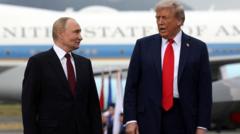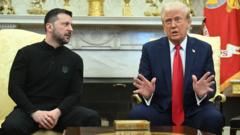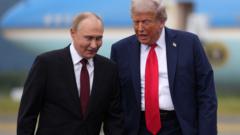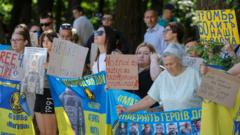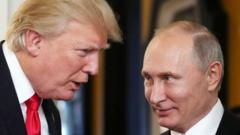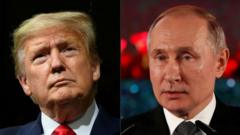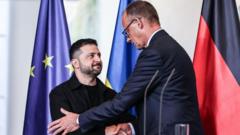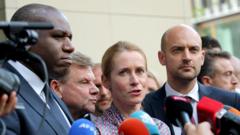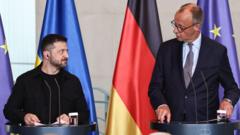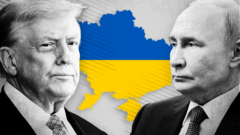Analysis reveals significant impacts on global alliances and expectations following the failed talks.
**Failed Summit: Implications of the Trump-Putin Meeting on Ukraine**
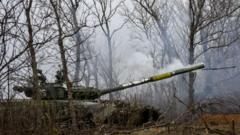
**Failed Summit: Implications of the Trump-Putin Meeting on Ukraine**
US and Russian leaders left Anchorage without a ceasefire agreement, raising concerns for Ukraine.
In a high-stakes summit held in Anchorage, President Donald Trump and President Vladimir Putin concluded their negotiations without achieving a ceasefire agreement regarding the ongoing conflict in Ukraine. During the three-hour meeting, the two leaders offered a joint statement to the media but abstained from taking questions, which left many aspects of the talks shrouded in ambiguity.
Trump’s post-summit remarks left little to be optimistic about, aligning with his earlier assertion that “there’s no deal until there’s a deal.” Despite claiming “great progress,” he provided no specific details. Observers noted that the lack of a tangible agreement could hinder Trump’s credibility as a negotiator and peacemaker, following previous promises that the summit would likely succeed. Interestingly, there was no clear commitment from Trump to engage further with Ukrainian President Volodymyr Zelensky, despite Putin's lighthearted suggestion about a future meeting in Moscow.
The implications of the summit also weigh heavily on the U.S. president’s reputation. Analysts pointed out that Trump’s inability to secure a ceasefire puts him in a delicate position, especially as Russian attacks in Ukraine persist. Western allies and Ukrainian officials may find a silver lining in the absence of unilateral concessions from Trump to Putin; however, the overall outcome reflects a growing rift in addressing the geopolitical conflict.
From the Russian perspective, the summit was characterized by Putin gaining distinct geopolitical visibility, showcasing his authority on the world stage. The press conference—deemed a "non-conference" due to the absence of questions—highlighted the ongoing discord surrounding Ukraine. Trump, known for his unyielding approach to negotiations, is now faced with the task of deciding whether to impose the promised new sanctions on Russia, a move that would reflect a tougher stance in response to Putin’s non-compliance with ceasefire requests.
Meanwhile, reactions from Ukraine suggest a mix of relief and trepidation. While the absence of a deal prevents immediate threats to Ukrainian territory, there is still deep-seated concern about Putin’s longstanding ambitions to undermine Ukraine's sovereignty. Observers note that promises made in past talks have frequently been disregarded by the Kremlin, casting doubt on the likelihood of any resolution stemming from this recent summit.
Overall, the Alaska meeting underscores a pivotal moment in U.S-Russia relations, leaving many questions unanswered and concerns about the future of the conflict in Ukraine. The implications of this summit will likely reverberate both in Washington and Kyiv as the situation continues to unfold.
Trump’s post-summit remarks left little to be optimistic about, aligning with his earlier assertion that “there’s no deal until there’s a deal.” Despite claiming “great progress,” he provided no specific details. Observers noted that the lack of a tangible agreement could hinder Trump’s credibility as a negotiator and peacemaker, following previous promises that the summit would likely succeed. Interestingly, there was no clear commitment from Trump to engage further with Ukrainian President Volodymyr Zelensky, despite Putin's lighthearted suggestion about a future meeting in Moscow.
The implications of the summit also weigh heavily on the U.S. president’s reputation. Analysts pointed out that Trump’s inability to secure a ceasefire puts him in a delicate position, especially as Russian attacks in Ukraine persist. Western allies and Ukrainian officials may find a silver lining in the absence of unilateral concessions from Trump to Putin; however, the overall outcome reflects a growing rift in addressing the geopolitical conflict.
From the Russian perspective, the summit was characterized by Putin gaining distinct geopolitical visibility, showcasing his authority on the world stage. The press conference—deemed a "non-conference" due to the absence of questions—highlighted the ongoing discord surrounding Ukraine. Trump, known for his unyielding approach to negotiations, is now faced with the task of deciding whether to impose the promised new sanctions on Russia, a move that would reflect a tougher stance in response to Putin’s non-compliance with ceasefire requests.
Meanwhile, reactions from Ukraine suggest a mix of relief and trepidation. While the absence of a deal prevents immediate threats to Ukrainian territory, there is still deep-seated concern about Putin’s longstanding ambitions to undermine Ukraine's sovereignty. Observers note that promises made in past talks have frequently been disregarded by the Kremlin, casting doubt on the likelihood of any resolution stemming from this recent summit.
Overall, the Alaska meeting underscores a pivotal moment in U.S-Russia relations, leaving many questions unanswered and concerns about the future of the conflict in Ukraine. The implications of this summit will likely reverberate both in Washington and Kyiv as the situation continues to unfold.


